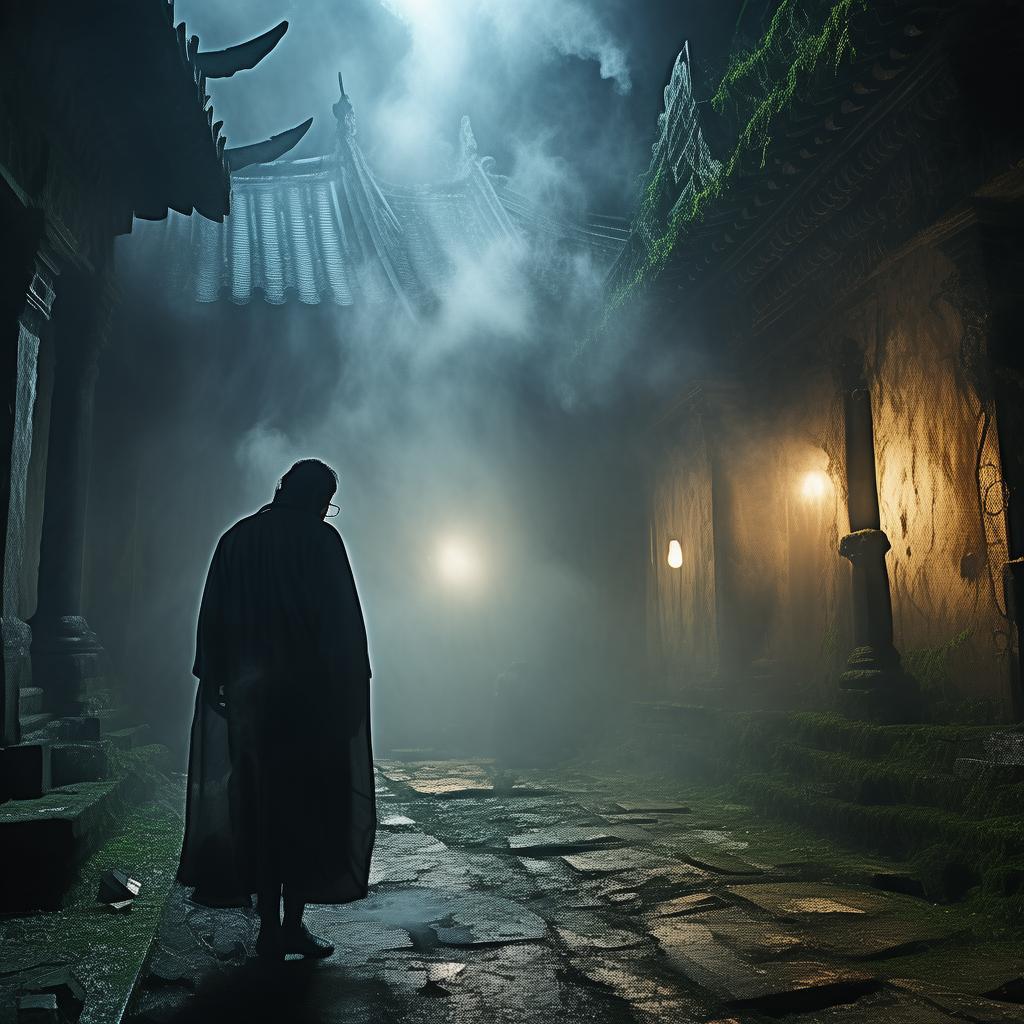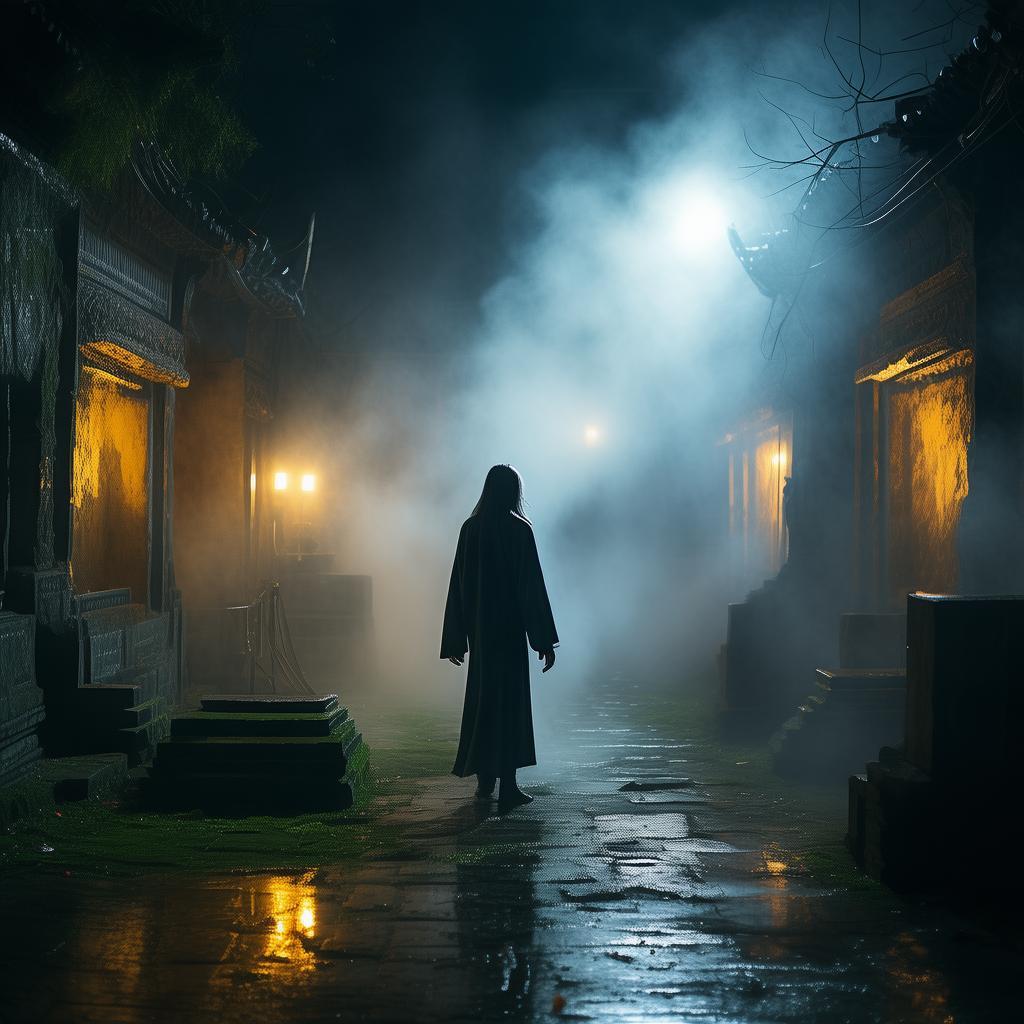The Buddha's Echo: The Mysterious Murders at the Monastery
The air was thick with the scent of incense and the soft hum of prayers echoing through the vast, stone-walled monastery. The tranquility of the place was a stark contrast to the turmoil that had recently swept over its hallowed grounds. The monks, cloaked in robes of deep red and saffron, moved with purpose, their minds focused on the teachings of the Buddha. Yet, even in the midst of their spiritual devotion, a dark shadow had begun to loom over the community.
It all began with the discovery of the first body, found in the ancient library, a place of wisdom and learning. The monk's body lay in a pool of blood, surrounded by scattered scrolls and an untouched copy of the Dhammapada. The shock waves rippled through the monastery like a typhoon, and the once-peaceful community was thrown into chaos.
The abbot, a wise and respected elder, called upon a young monk named Kassapa to investigate the crime. Kassapa, with his inquisitive mind and sharp intellect, was no stranger to the monastic life, but this was the first time he had been tasked with such a daunting responsibility. He approached the case with a mixture of fear and determination, knowing that the fate of the monastery rested in his hands.
Kassapa's first lead was the library itself. The room was filled with ancient texts and scrolls, each one a testament to the monks' dedication to their faith. But amidst the chaos, something stood out to Kassapa: a single, blood-stained scroll, untouched by anyone else. It was a scroll of the Sutta Pitaka, one of the three divisions of the Pali Canon. The significance of this scroll was not lost on Kassapa; it was a sacred text, reserved for the most senior monks.
He began to question the monks, each one of them deeply affected by the tragedy. He found that many had motives, from envy over the monk's position to resentment over past grievances. But as he delved deeper, he realized that the truth was not as simple as it seemed. The clues pointed to a supernatural force, one that seemed to defy the very laws of nature.

Kassapa's investigation led him to the temple's secret chamber, a place where the monks performed their most sacred rituals. The air was thick with the smoke of incense and the sound of chanting. In the center of the room stood a large, ornate Buddha statue, its eyes watching over the proceedings. It was here that Kassapa found the next clue: a faint, echoing whisper that seemed to come from the statue itself.
The whisper was faint, almost imperceptible, but it spoke of a past crime, a sin that had been committed within the monastery walls. Kassapa followed the whisper to a hidden compartment behind the statue, where he discovered a collection of old letters and scrolls. Among them was a letter that implicated a senior monk in a murder many years ago. The letter spoke of a secret pact, a deal made with a dark force that promised untold power in exchange for the soul of a monk.
As Kassapa pieced together the puzzle, he realized that the murders were not the work of a human hand, but of a supernatural entity bound to the monastery by an ancient curse. The entity, fueled by the monk's sin and the darkness within the temple, had been seeking a way to free itself and exact its revenge.
With time running out, Kassapa knew that he had to break the curse and free the entity from its tormented existence. He gathered the monks and together, they performed a ritual of atonement and cleansing, beseeching the Buddha for forgiveness and mercy. As the ritual reached its climax, the temple was bathed in a brilliant light, and the entity, now free, was released into the afterlife.
The monks, forever changed by their experience, returned to their lives with a newfound respect for the power of the supernatural and the importance of spiritual purity. Kassapa, hailed as a hero, continued his quest for knowledge and understanding, ever vigilant for the next mystery that would challenge his mind and spirit.
In the end, the monastery was saved, and the peace that had been shattered was restored. But the echoes of the Buddha's whisper continued to resonate through the ancient halls, a reminder of the delicate balance between the world of the living and the world of the spirit.
✨ Original Statement ✨
All articles published on this website (including but not limited to text, images, videos, and other content) are original or authorized for reposting and are protected by relevant laws. Without the explicit written permission of this website, no individual or organization may copy, modify, repost, or use the content for commercial purposes.
If you need to quote or cooperate, please contact this site for authorization. We reserve the right to pursue legal responsibility for any unauthorized use.
Hereby declared.









